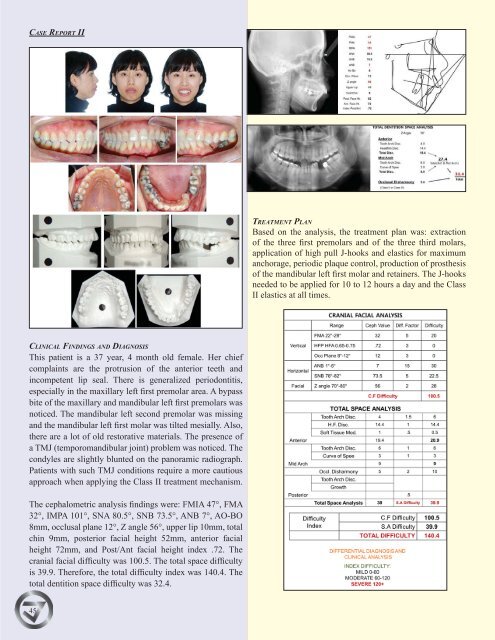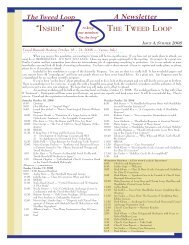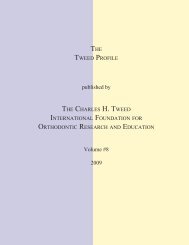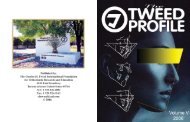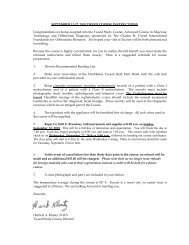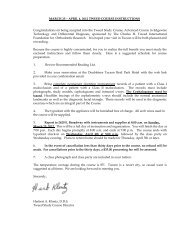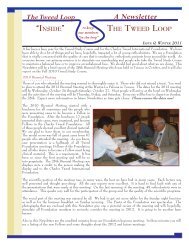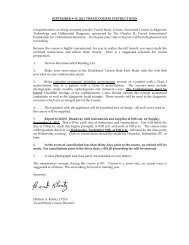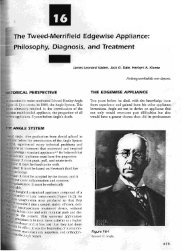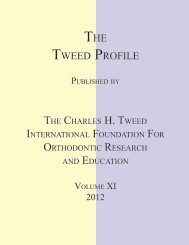the tweed profile - The Charles H. Tweed International Foundation
the tweed profile - The Charles H. Tweed International Foundation
the tweed profile - The Charles H. Tweed International Foundation
Create successful ePaper yourself
Turn your PDF publications into a flip-book with our unique Google optimized e-Paper software.
CASE REPORT II<br />
TREATMENT PLAN<br />
Based on <strong>the</strong> analysis, <strong>the</strong> treatment plan was: extraction<br />
of <strong>the</strong> three first premolars and of <strong>the</strong> three third molars,<br />
application of high pull J-hooks and elastics for maximum<br />
anchorage, periodic plaque control, production of pros<strong>the</strong>sis<br />
of <strong>the</strong> mandibular left first molar and retainers. <strong>The</strong> J-hooks<br />
needed to be applied for 10 to 12 hours a day and <strong>the</strong> Class<br />
II elastics at all times.<br />
CLINICAL FINDINGS AND DIAGNOSIS<br />
This patient is a 37 year, 4 month old female. Her chief<br />
complaints are <strong>the</strong> protrusion of <strong>the</strong> anterior teeth and<br />
incompetent lip seal. <strong>The</strong>re is generalized periodontitis,<br />
especially in <strong>the</strong> maxillary left first premolar area. A bypass<br />
bite of <strong>the</strong> maxillary and mandibular left first premolars was<br />
noticed. <strong>The</strong> mandibular left second premolar was missing<br />
and <strong>the</strong> mandibular left first molar was tilted mesially. Also,<br />
<strong>the</strong>re are a lot of old restorative materials. <strong>The</strong> presence of<br />
a TMJ (temporomandibular joint) problem was noticed. <strong>The</strong><br />
condyles are slightly blunted on <strong>the</strong> panoramic radiograph.<br />
Patients with such TMJ conditions require a more cautious<br />
approach when applying <strong>the</strong> Class II treatment mechanism.<br />
<strong>The</strong> cephalometric analysis findings were: FMIA 47°, FMA<br />
32°, IMPA 101°, SNA 80.5°, SNB 73.5°, ANB 7°, AO-BO<br />
8mm, occlusal plane 12°, Z angle 56°, upper lip 10mm, total<br />
chin 9mm, posterior facial height 52mm, anterior facial<br />
height 72mm, and Post/Ant facial height index .72. <strong>The</strong><br />
cranial facial difficulty was 100.5. <strong>The</strong> total space difficulty<br />
is 39.9. <strong>The</strong>refore, <strong>the</strong> total difficulty index was 140.4. <strong>The</strong><br />
total dentition space difficulty was 32.4.<br />
45


